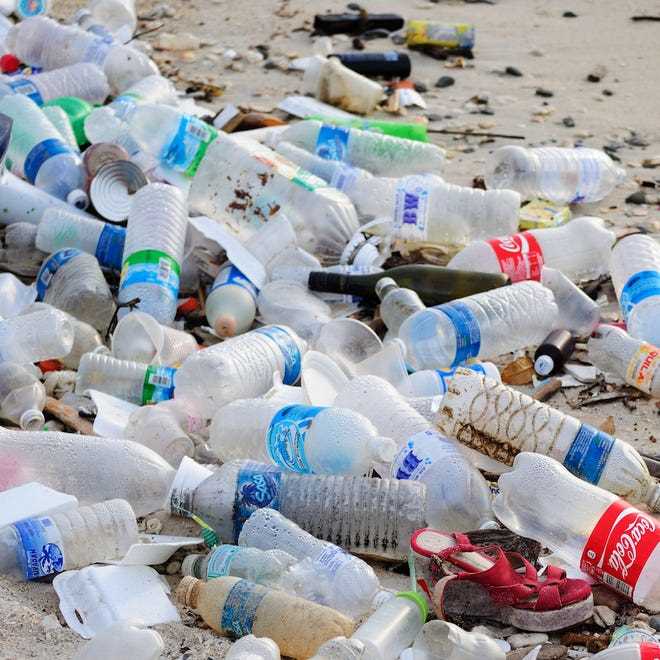
Have you ever wondered what happens to the garbage we throw away? You may be surprised to learn that our waste management system is much more complex than simply tossing our trash in a bin and forgetting about it. In fact, the journey of our garbage involves a series of steps and processes designed to minimize its impact on the environment and maximize its potential for recycling and reuse.
From the moment we throw something away, it enters a vast network of waste management infrastructure. This includes collection systems, transfer stations, recycling facilities, and disposal sites. Each step in this system has a specific purpose and plays a crucial role in ensuring that our waste is handled appropriately.
One important stage in waste management is the sorting process. After our garbage is collected, it is transported to a facility where it is carefully sorted into different categories. This allows for the separation of recyclable materials, organic waste, and non-recyclable items. The recyclable materials are then sent to recycling facilities, where they undergo various processes to be turned into new products. Organic waste, on the other hand, can be composted and used as a natural fertilizer.
The remaining non-recyclable waste, also known as residual waste, is disposed of in landfills or incinerated. Landfills are designed to safely contain and isolate waste from the environment, preventing contamination of soil and water. Incineration, on the other hand, involves burning waste at high temperatures to generate energy. Both methods have their own benefits and drawbacks, and efforts are being made to minimize their environmental impact.
Understanding the journey of our garbage is essential in order to make informed decisions about waste management and promote sustainable practices. By reducing our waste, recycling whenever possible, and supporting initiatives that aim to improve waste management, we can all contribute to a cleaner and healthier environment for future generations.
- What Happens to Our Garbage?
- Collection and Sorting
- Treatment and Disposal
- Learn About the Waste Management System
- Types of Waste: Exploring the Different Categories
- Collection and Transportation: How Garbage is Gathered and Moved
- Collection
- Transportation
- Treatment and Disposal: Where Does Our Trash Go?
- Treatment Processes
- Disposal Methods
- Environmental Impact: Understanding the Consequences of Waste
- Innovations and Solutions: Improving Waste Management Practices
- Q&A
- What happens to our garbage after we throw it away?
- What is a landfill?
- What is a waste-to-energy facility?
- Is recycling the only solution for managing our garbage?
- What are the environmental impacts of our waste management system?
What Happens to Our Garbage?
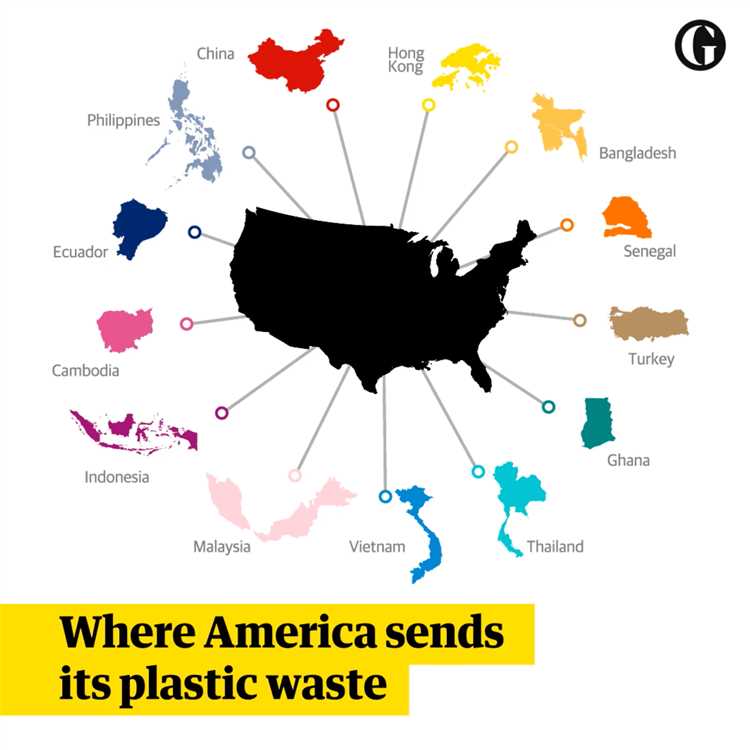
When we throw something in the trash, have you ever wondered what happens to it? Our waste management system plays a crucial role in handling and disposing of our garbage in an efficient and environmentally responsible manner.
Collection and Sorting
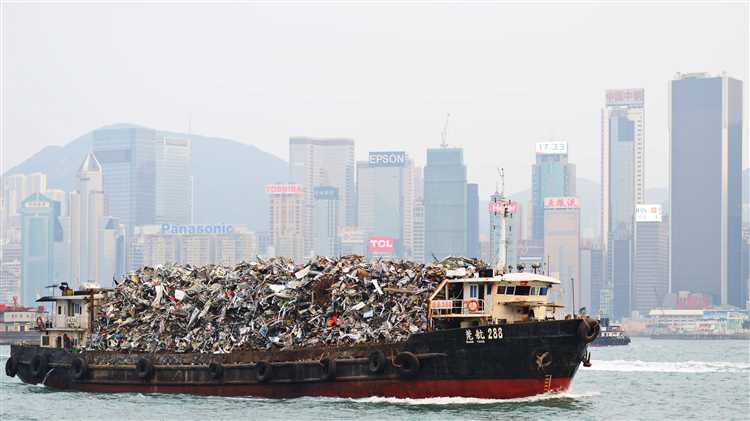
The first step in the waste management process is collection. Garbage trucks and bins are strategically placed to ensure that all residential and commercial waste is collected regularly. Once collected, the garbage is transported to sorting facilities. Here, different types of waste are separated and sorted into various categories such as recyclables, organic waste, and non-recyclables.
Treatment and Disposal
After sorting, each category of waste undergoes different treatment processes. Recyclables, such as paper, plastic, glass, and metal, are sent to recycling plants where they are processed and transformed into new materials. Organic waste, such as food scraps and yard waste, is often composted or converted into biogas through anaerobic digestion. Non-recyclables and hazardous waste are typically sent to waste-to-energy facilities or landfills for disposal.
| Treatment Option | Description |
|---|---|
| Recycling | Materials are sorted, cleaned, and processed into new products. |
| Composting | Organic waste is decomposed into nutrient-rich compost for soil. |
| Waste-to-Energy | Non-recyclables are burned to generate heat or electricity. |
| Landfill | Non-recyclables are buried and managed in designated areas. |
It is important to note that waste management practices vary across different regions and countries. Some places prioritize recycling and composting, while others heavily rely on waste-to-energy or landfill options. The goal is to minimize the amount of waste that ends up in landfills to protect the environment and conserve resources.
So the next time you throw something away, remember that there is a complex waste management system working behind the scenes to handle and dispose of our garbage responsibly.
Learn About the Waste Management System
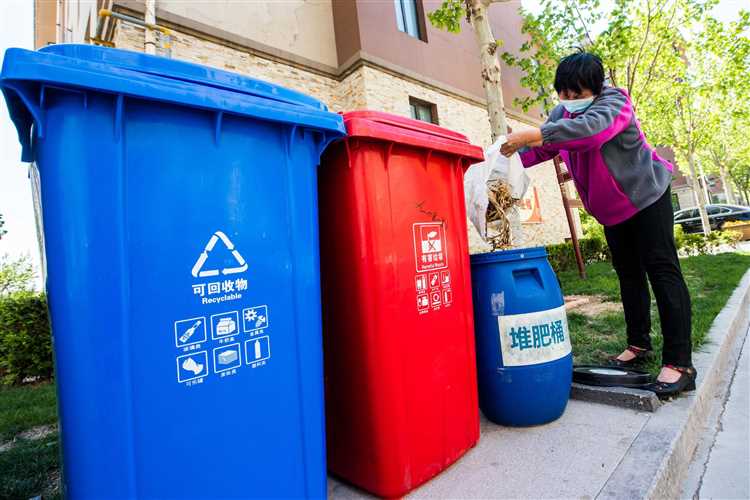
When it comes to dealing with our garbage, it’s important to understand the waste management system that is in place. This system is designed to safely and efficiently dispose of our waste while also minimizing its impact on the environment. Here is a breakdown of how it works:
| Step | Description |
|---|---|
| Collection | Garbage collection is the first step in the waste management process. Waste is typically collected from households, businesses, and other locations by garbage trucks on a regular schedule. |
| Transportation | Once the garbage is collected, it is transported to a waste transfer station or a landfill. This is done using specialized vehicles that are capable of hauling large amounts of waste. |
| Sorting and Separation | At the transfer station or landfill, the waste is sorted and separated into different categories. This helps to identify recyclable materials and separates hazardous waste from non-hazardous waste. |
| Treatment and Disposal | After sorting, the waste goes through various treatment processes depending on its type. This may include composting, incineration, or landfill disposal. Each method is chosen based on environmental considerations and regulations. |
| Recycling and Reuse | Recyclable materials that have been separated from the waste are sent to recycling facilities where they can be turned into new products. This helps to conserve resources and reduce the amount of waste that ends up in landfills. |
| Monitoring and Regulation | The waste management system is closely monitored and regulated by local, state, and federal agencies. This ensures that proper procedures are followed and that any potential environmental impacts are minimized. |
Understanding the waste management system is an important part of creating a sustainable future. By learning about how our garbage is handled, we can make informed decisions about recycling, waste reduction, and supporting initiatives that aim to improve the system.
Types of Waste: Exploring the Different Categories
When it comes to waste management, it is important to understand the different categories of waste that exist. By understanding the types of waste, we can better implement effective waste management strategies and find ways to reduce, reuse, and recycle.
1. Solid Waste: Solid waste is the most common type of waste and includes items that are not liquid or gaseous. This category includes household waste, construction debris, and industrial waste. Solid waste can be further classified into organic waste (such as food scraps and yard waste) and inorganic waste (such as plastics and metals).
2. Liquid Waste: Liquid waste refers to any waste that is in liquid form and can include wastewater, sewage, and other liquid materials. Proper management of liquid waste is essential to prevent pollution of water bodies and public health risks.
3. Hazardous Waste: Hazardous waste is any waste that poses a significant threat to human health or the environment. This category includes chemicals, batteries, pesticides, and medical waste. Proper disposal and handling of hazardous waste is crucial to prevent contamination and negative impacts on ecosystems.
4. Electronic Waste: Electronic waste, also known as e-waste, refers to discarded electronic devices. This waste category includes old computers, televisions, cell phones, and other electronic appliances. E-waste contains hazardous materials that can harm the environment if not properly managed and recycled.
5. Biomedical Waste: Biomedical waste refers to waste generated during healthcare activities and includes items such as used needles, blood-soaked bandages, and expired medications. Proper disposal and treatment of biomedical waste are necessary to prevent the spread of infections and protect public health.
6. Radioactive Waste: Radioactive waste is waste that contains radioactive materials and is generated from nuclear power plants, medical facilities, and other industries. This waste is highly hazardous and has to be properly stored and managed to prevent radiation exposure and contamination.
By understanding the different categories of waste, individuals and communities can make informed choices about waste management practices and contribute to a healthier and cleaner environment.
Collection and Transportation: How Garbage is Gathered and Moved
In order to manage garbage effectively, it is crucial to have a well-organized collection and transportation system. This process involves the gathering and movement of waste from various sources to the appropriate disposal facilities. Let’s take a look at how this process works:
Collection
The first step in waste management is the collection of garbage from households, businesses, and public spaces. In residential areas, garbage is typically collected by local municipalities or private waste management companies. They provide residents with garbage bins or bags and establish collection schedules. Residents are responsible for placing their garbage in designated collection spots before the designated time.
For businesses, waste management companies often provide specialized containers and schedules tailored to their specific needs. Public spaces, such as parks and streets, also have designated garbage bins for people to dispose of their waste.
It is important for individuals to follow proper waste disposal guidelines to ensure efficient collection and minimize environmental impact.
Transportation
Once garbage is collected, it needs to be transported to disposal facilities. This transportation process involves loading the waste onto garbage trucks or other specialized vehicles. These vehicles are designed to handle different types of waste, including recyclables, organic waste, and non-recyclable materials.
Garbage trucks are equipped with large containers or compactors to hold the garbage securely during transportation. Depending on the distance and location of the disposal facility, garbage may be transported locally or over long distances.
Efficient routing and logistics systems are crucial to optimize transportation and minimize costs and environmental impact.
Once the garbage reaches its destination, it is unloaded at the appropriate disposal facilities, such as landfills, incinerators, or recycling plants, where it will undergo further processing or final disposal.
Overall, the collection and transportation of garbage play a vital role in waste management by ensuring that waste is properly gathered from various sources and safely transported to appropriate disposal facilities.
Treatment and Disposal: Where Does Our Trash Go?
Once our garbage is collected from our homes and businesses, it goes through a series of treatments and disposal processes. The goal is to minimize the environmental impact and create sustainable waste management practices.
Treatment Processes
The first step in treating our trash is typically sorting and separating different types of waste. This includes recyclables, organic waste, and non-recyclable materials. At recycling facilities, recyclable materials like paper, plastic, glass, and metal are sorted and prepared for reprocessing.
Organic waste, such as food and yard waste, can go through a composting process where it decomposes naturally and turns into nutrient-rich soil. This compost can then be used for landscaping and gardening purposes.
Non-recyclable materials, also known as residual waste or non-hazardous solid waste, are usually sent to waste-to-energy plants or landfill sites for disposal.
Disposal Methods
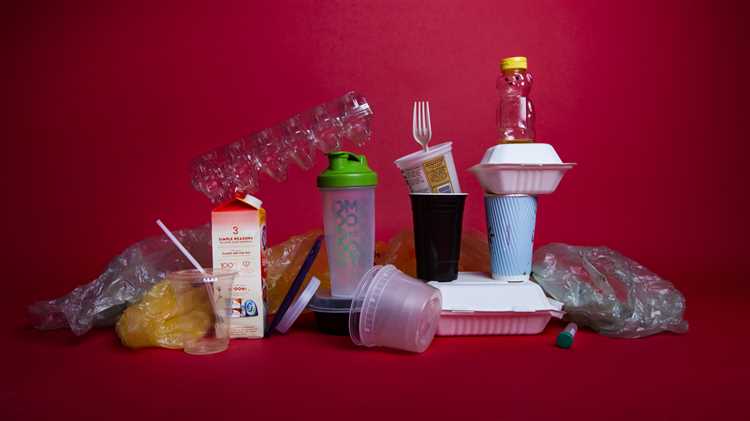
Waste-to-energy plants are facilities where the non-recyclable materials are incinerated and used to generate electricity. The heat from the burning waste is used to produce steam, which drives turbines to generate power. This process helps reduce the volume of waste and generates energy in the form of electricity.
Landfill sites are designated areas where the remaining waste that cannot be recycled or used for energy is disposed of. Landfills are carefully engineered to minimize environmental impacts, such as groundwater pollution and air emissions. The waste is compacted and covered with layers of soil to promote decomposition and reduce odors.
| Advantages of Waste-to-Energy Plants: | Advantages of Landfill Sites: |
|---|---|
| – Reduces the volume of waste – Generates electricity – Provides an alternative to fossil fuels |
– Provides a designated space for waste disposal – Allows for controlled decomposition – Can be monitored and managed for environmental impacts |
It is important for individuals and communities to be aware of the treatment and disposal processes for our trash. By understanding where our waste goes, we can make informed decisions about reducing, reusing, and recycling our materials to minimize the impact on the environment.
Environmental Impact: Understanding the Consequences of Waste
When it comes to waste management, it’s important to understand the environmental impact that our waste has on the planet. The consequences of waste are wide-reaching and affect various aspects of the ecosystem.
1. Landfill Pollution: One of the most significant environmental impacts of waste is the pollution caused by landfills. As waste accumulates in landfills, it decomposes and produces greenhouse gases like methane, which contributes to climate change. Additionally, landfills can contaminate soil and groundwater, posing a threat to plants, animals, and human health.
2. Air Pollution: Waste management processes, such as incineration and transportation, can release harmful pollutants into the air. Burning waste releases toxic chemicals and particulate matter, which can lead to respiratory problems, cardiovascular diseases, and other health issues.
3. Water Contamination: Improper waste disposal or leakage from landfills can contaminate water sources. This can have detrimental effects on aquatic life and can also lead to waterborne illnesses in humans who consume contaminated water.
4. Deforestation: The production and disposal of certain waste materials, such as paper and packaging, contribute to deforestation. Trees are cut down to make these products, and improper disposal leads to more waste ending up in landfills, perpetuating the cycle.
5. Wildlife Impact: Wildlife is also affected by waste, especially plastic waste. Many marine animals mistake plastic for food and can choke on it or get entangled in it, leading to injury or death. Land animals may also ingest plastic waste, leading to health issues and ultimately disrupting the balance of ecosystems.
As awareness of the environmental impact of waste grows, individuals and organizations are taking steps to mitigate these consequences. Recycling, composting, and reducing waste generation are key strategies in minimizing the negative effects of waste on the environment. Additionally, responsible waste management practices and implementing environmentally-friendly waste treatment technologies can further help reduce the environmental impact of waste.
Innovations and Solutions: Improving Waste Management Practices
As our population continues to grow and our consumption patterns evolve, it has become increasingly important to find innovative solutions to improve waste management practices. Here are some of the key advancements and strategies that are transforming the way we handle and minimize waste:
- Recycling Technologies: The development of new recycling technologies has allowed us to divert a significant amount of waste from landfills. Advanced sorting systems, such as optical scanners and electromagnetic separators, allow for more efficient and accurate recycling processes.
- Composting: Composting is a natural process that converts organic waste into nutrient-rich soil. This method not only reduces the volume of waste sent to landfills but also provides a valuable resource for agricultural purposes. Many communities are implementing composting programs to encourage residents to separate their organic waste.
- Waste-to-Energy: Waste-to-energy facilities use advanced thermal treatment technologies to convert non-recyclable waste into electricity or heat. This not only reduces the amount of waste sent to landfills but also generates a renewable energy source. These facilities are becoming increasingly popular in countries with limited landfill space.
- Extended Producer Responsibility: Extended Producer Responsibility (EPR) is a policy approach that holds manufacturers accountable for the entire lifecycle of their products, including their disposal. By placing the onus on producers to manage the waste generated by their products, EPR encourages the development of more sustainable and recyclable materials.
- Education and Awareness: Educating the public about waste management and promoting sustainable practices is crucial to improving waste management practices. Many communities are implementing educational campaigns to teach residents about proper waste separation, the importance of recycling, and the benefits of reducing waste.
Overall, these innovations and solutions are helping to create a more sustainable approach to waste management. By implementing these strategies and embracing a circular economy model, we can reduce our reliance on landfills, conserve resources, and protect the environment for future generations.
Q&A
What happens to our garbage after we throw it away?
After we throw away our garbage, it is usually collected by waste management companies and taken to a landfill or a waste-to-energy facility.
What is a landfill?
A landfill is a designated area where waste is buried and covered with layers of soil. Over time, the waste decomposes and produces gases, which are often collected and used for energy.
What is a waste-to-energy facility?
A waste-to-energy facility is a facility where waste is burned to generate heat or electricity. This process reduces the volume of waste and can also generate renewable energy.
Is recycling the only solution for managing our garbage?
No, recycling is just one part of the waste management system. Other solutions include waste reduction, composting, and using landfill gas for energy.
What are the environmental impacts of our waste management system?
Our waste management system can have negative environmental impacts, such as the production of greenhouse gases, the contamination of soil and water, and the depletion of natural resources. However, proper waste management practices can help mitigate these impacts.